Moose Skin Lasso Or Line Item Number: E7492-0 from the National Museum of Natural History
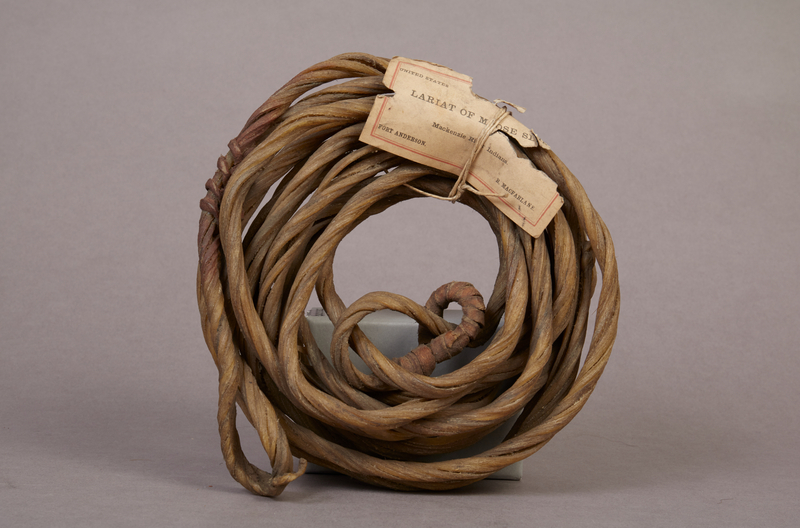
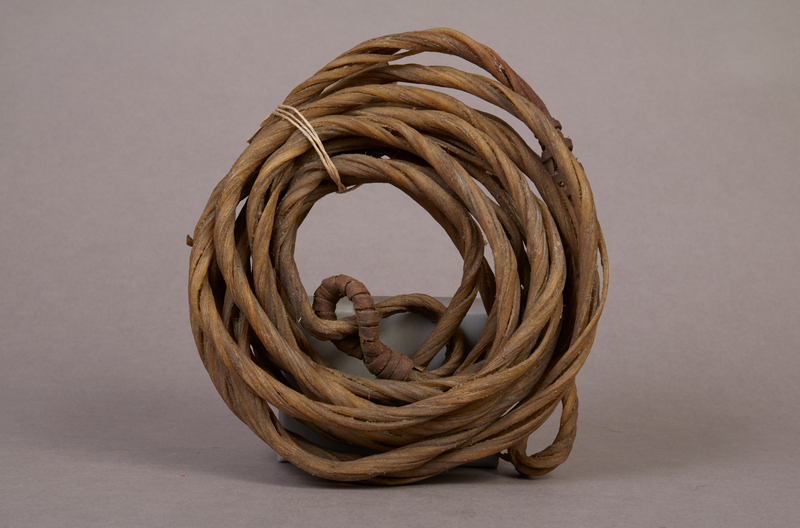
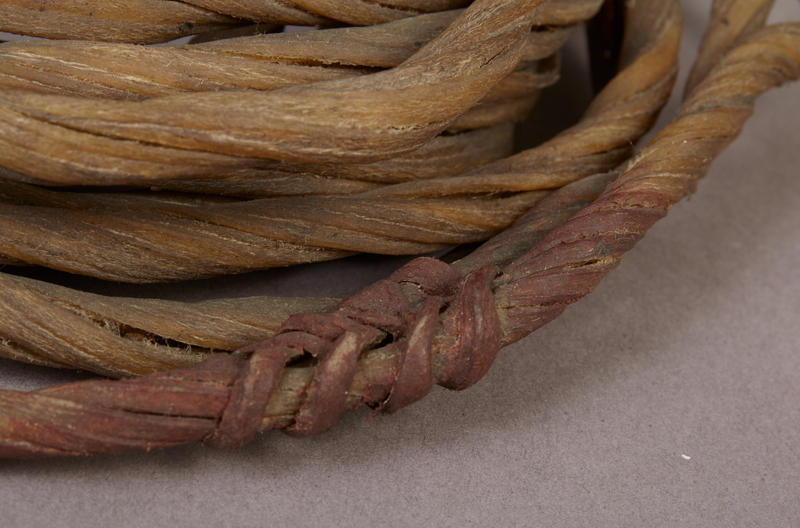
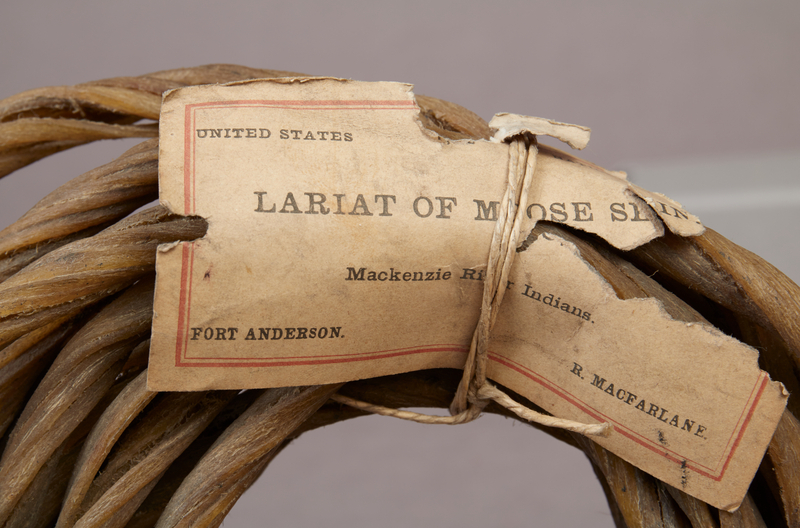
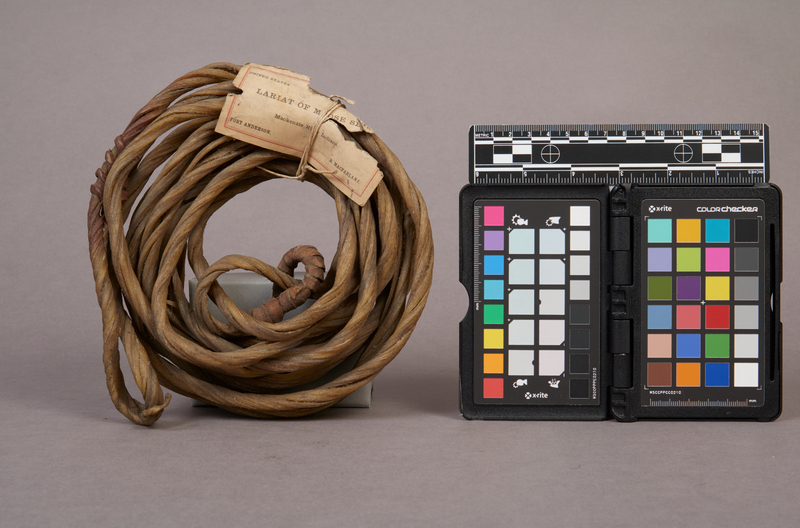
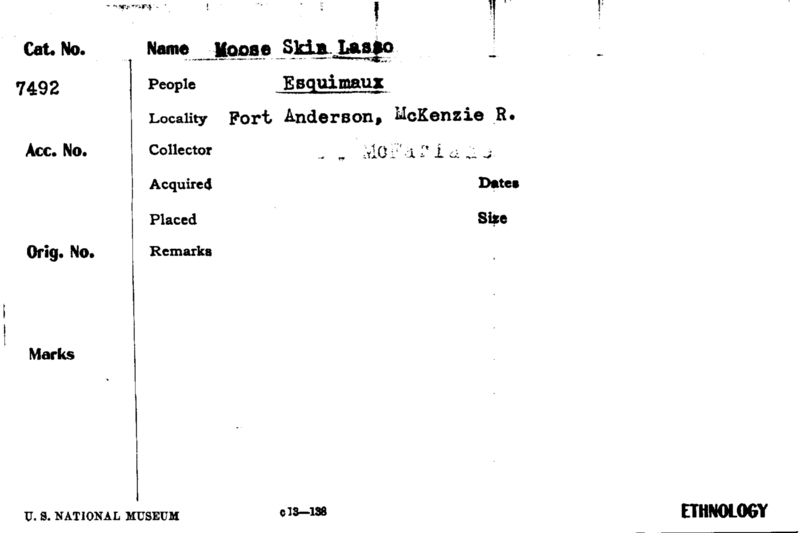
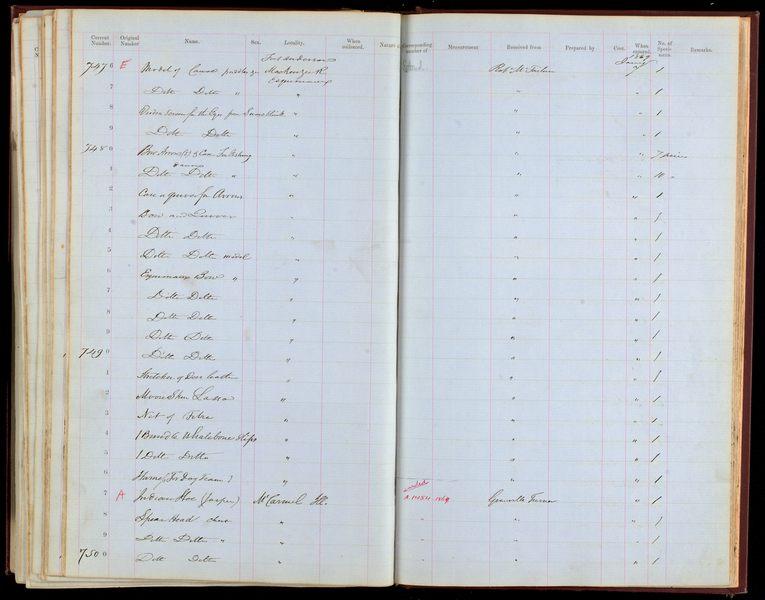
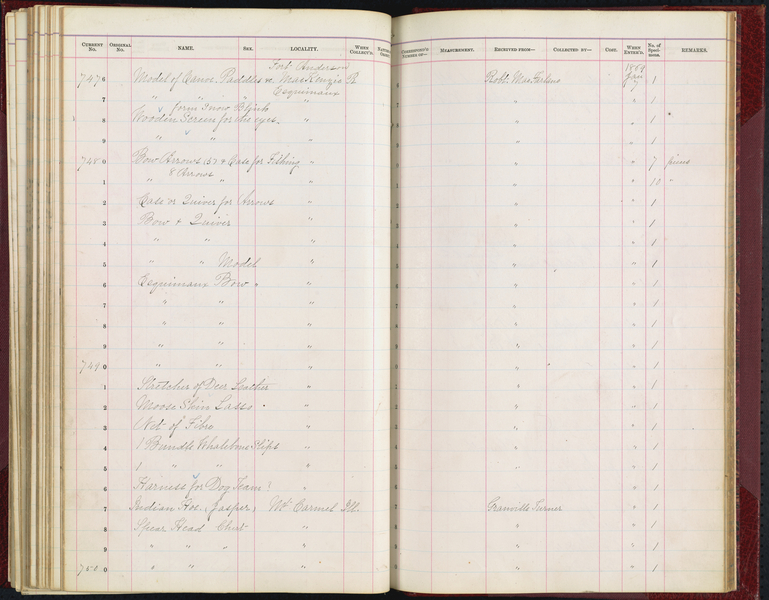
Notes
Source of the information below: Inuvialuit Pitqusiit Inuuniarutait: Inuvialuit Living History, The MacFarlane Collection website, by the Inuvialuit Cultural Resource Centre (ICRC), Inuvik, N.W.T., Canada (website credits here http://www.inuvialuitlivinghistory.ca/posts/12 ), entry on this artifact http://www.inuvialuitlivinghistory.ca/items/247 , retrieved 2-6-2020: Line made from several strips of hide that have been twisted together. A loop has been fashioned at each end by folding the line back on itself and splicing the strands into the main body of the line. The Smithsonian Institution catalogue card identifies the material used to make this line as moose hide. More information here: http://www.inuvialuitlivinghistory.ca/item_types/40: Lines made from various types of animal skins were used on harpoons, for tying things together, and for a variety of other purposes. Lines up to several metres in length were made cutting a narrow strip in one continuous piece from a single hide. The skins were first scraped to remove the underlying flesh, and the hair was also removed.Listed on page 116 in "The Exhibits of the Smithsonian Institution at the Panama-Pacific International Exposition, San Francisco, California, 1915", in section "The Spindle".
Item History
- Made in Northwest Territories, Canada
- Collected in Northwest Territories, Canada
- Received from Roderick R. MacFarlane on January 7, 1869
What
- Name
- Moose Skin Lasso Or Line
- Identification Number
- E7492-0
- Type of Item
- line
Who
- Culture
- Eskimo, Inuit and Inuvialuk
- Received from
- Roderick R. MacFarlane
Where
- Holding Institution
- National Museum of Natural History
- Made in
- Northwest Territories, Canada
- Collected in
- Northwest Territories, Canada
When
- Acquisition Date
- on January 7, 1869
Other
- Accession Number
- 69A00012